Have you heard about a dirty or lazy keto diet and wondered if it's right for you?
"Dirty" and "lazy" aren't usually considered good things, but with keto, they might be part of how to design a diet that gets the results you're looking for.

Start your FREE 30-day trial!
Get instant access to healthy low-carb and keto meal plans, fast and easy recipes, weight loss advice from medical experts, and so much more. A healthier life starts now with your free trial!
1. What is dirty or lazy keto?

A lazy keto diet usually means one that restricts carbs but doesn't have other rules about calories, fat, or protein.
And what is a dirty keto diet? That's one that includes fast food and other shortcuts like shakes and bars, as long as you stay below a specific carb limit.
Sometimes, these two terms are used interchangeably.
If you don't track macros but avoid foods with carbs, your diet might be called a "lazy" keto diet. In this case, your meals would mostly consist of classic keto foods, such as eggs, meat, and non-starchy veggies. Avoid obvious carb sources, such as bread, fruit juice, and potatoes.
If your lazy keto diet includes a fast-food burger minus the bun, a prepackaged protein shake, or a sandwich made with store-bought low-carb bread, your diet probably earns the "dirty" label too. So now you're enjoying a dirty, lazy keto diet.
Including these convenient (but processed) options earns your diet the "dirty" label. So now you're enjoying a dirty, lazy keto diet.
But we could also call it an "easy" keto diet. "Dirty" and "lazy" sound negative. But convenience isn't always a bad thing.
2. How to succeed with lazy keto
A lazy keto diet can make losing weight and getting healthy possible for almost everyone. We follow a similar "keep it simple" approach here at Diet Doctor.
Here's how to think about it:
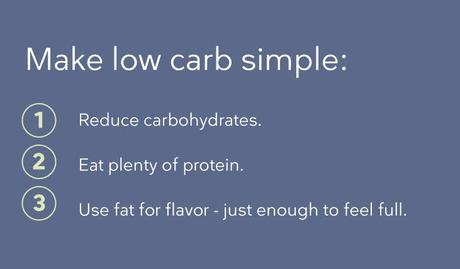
Cutting carbs helps you burn fat - both the fat you eat and the fat on your body.It's simple.
Not everyone needs to limit their net carbs to 20 grams a day to lose weight. The same goes for eating to meet specific macro percentages - a heavily promoted practice.
Some start by gradually limiting their carbs, as described in our guide, "Six steps down the carb mountain." They might not lose weight as fast as someone who starts with a strict keto plan, but they're also less likely to experience the side effects a quick transition can bring.
Another simple way to reduce carbs is to stick with a list of easy keto foods and stay away from high-carb ones. This graphic can get you started.
However, to lose weight effectively, you may want to pay attention to your net carb intake, meaning total grams of carbs minus indigestible fiber. But you don't have to micromanage your carbs. Aiming for a range of about 20 to 50 grams a day can help you lose weight without hunger.
With Diet Doctor meal plans, you can be "lazy" and still count net carbs. Our keto meal plans will do the tracking for you and keep you under 20 grams a day with no extra effort from you.

As for protein, try to get adequate protein at nearly every meal, whether your low-carb diet is lazy or not. Protein helps you avoid hunger and maintain muscle mass. You can calculate your personal protein needs with our guide to protein intake.
With carbs low and protein as a priority, fat becomes the most variable ingredient. Eat less for weight loss, but more if you're targeting ketone production to address specific health conditions.
Our guide to fat can help you find how much fat is right for you. Remember: There isn't a fat target you have to reach to lose weight. If you're feeling hungry on keto, check to see if you're getting enough protein and fiber-filled veggies - then add some extra fat to your meals.
3. How to succeed with dirty keto
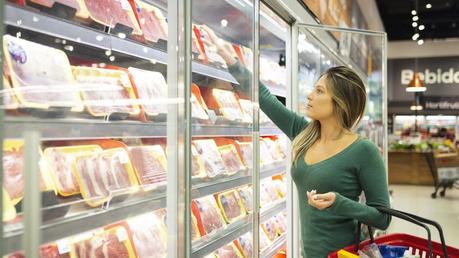
We recommend choosing whole foods for your keto diet - the ones without a lot of packaging or long ingredient lists - most of the time. The foods in a "dirty" keto diet may have less nutrition per calorie and won't help you feel as full compared to a whole foods keto diet.
Our medical team has found that some people who rely heavily on low-carb convenience foods have weight loss stalls or other difficulties reaching their health goals.
Although we feel a whole foods keto diet is the best approach, you may find that these kinds of foods don't interfere with weight loss or health improvements. But even if they do, that still doesn't mean your diet has to be "perfect" all the time. Instead, we can help you find the balance between reaching your goals and enjoying your way of eating.
Most people don't have to limit themselves to organic, grass-fed, all-natural everything to lose weight.
Most people don't have to limit themselves to organic, grass-fed, all-natural everything to lose weight. You can be successful with foods that fit your budget and come from your local grocery store.If you choose convenience foods over "clean" options, pay attention to how you feel when you have low-carb fast foods or those with more processing, non-caloric sweeteners, and a longer ingredients list.
Do you:
- Get hungry soon after meals?
- Experience digestive issues, such as bloating or gas?
- Have an afternoon energy slump?
- Crave high-carb foods?
- Start regaining weight or have more trouble keeping blood sugar stable?
If you answered "yes" to any of these questions, you might need to be more selective in your food choices. If you don't have those issues, then dirty, lazy keto may work for you.
Some sources warn that dirty keto means not getting enough of the right nutrients in the form of protein, vitamins, and minerals. But you can still prioritize protein and eat your veggies with dirty keto.
Other sources caution that dirty keto gives you too much of the "wrong" ingredients. But warnings about the effects of vegetable oils, processed meats, and non-caloric sweeteners on long-term health are based on low-quality observational studies about nutrition. This kind of evidence is weak because it can't show cause and effect relationships.
Some people might find it too overwhelming to reduce carbs and avoid vegetable oils, processed meats, and noncaloric sweeteners at the same time. In that case, clear, decisive evidence says limiting carbs can improve weight loss and health. So cutting carbs should come first.
4. Eating dirty, lazy keto
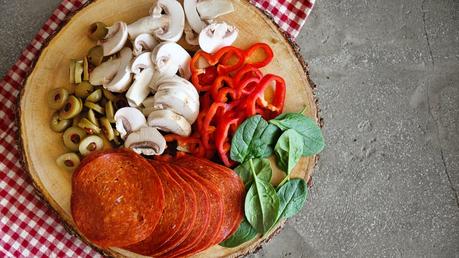
If you add packaged, processed, or fast foods to your keto diet, you should still follow the guidelines outlined above: Keep carbs low, get enough protein, and add fat as needed for flavor and fullness.
Your first meal of the day can be a quick low-carb protein shake or an even quicker keto bar. Online stores sell keto bagels and cereal. No matter what you choose, be sure to get the protein you need to start your day off right.
If you're grabbing a meal away from home, you can try "egg bites" for breakfast and a bunless bacon cheeseburger or keto-friendly pizza for lunch or dinner.
If you can, have a side salad to round out your meal. Dirty, lazy keto doesn't mean forgetting about vegetables, but it does mean you can grab a diet soda if you want one.
Dinner can be hot dogs on the grill. Or turn low-carb tortillas from the grocery store into a quick taco night. Salsa, mayo, and salad dressing from a jar are fine, as long as they don't contain added sugars.
If they're low-carb, beef sticks, pork rinds, and Parmesan crisps make perfect grab-and-go keto snacks.
For dessert, try sugar-free gelatin topped with sugar-free whipped cream or look for some keto-compatible ice cream, now available at most grocery stores.
5. What if you don't eat enough fat on keto?

If you've been introduced to keto through its focus on fatty foods, you might be concerned that a simple, convenient version won't give you enough fat to lose weight. But do you need to use fat bombs and butter-filled coffee to lose weight?
In a word, no.
It is true that if you don't eat enough fat on keto, you run the risk of not eating enough calories. Including fat in your low-carb diet can keep your calorie intake from going too low. Once you've met your protein needs, adding fat to fiber-filled vegetables helps you stay full between meals.
Also, dietary fat is important for pleasure and taste. Not eating enough of it might mean that your meals are disappointing. Cooking with fat or drizzling it on afterward can help your protein and vegetables taste amazing. A diet you enjoy requires less willpower to follow.
This means there's no reason to be afraid of eating fat. But, as far as we know, eating more of it than you need is probably not going to help you lose weight.
The importance of high amounts of fat in a ketogenic diet originated with treatments for epilepsy, which we discuss in a bit. Producing ketones from dietary fat may be useful for other reasons, but it won't necessarily help you lose weight.
The best available evidence confirms just two dietary ways to lower insulin levels and promote using body fat for fuel: reducing calories and reducing carbs.
Calorie restriction - or any diet that has you counting calories so you can stick to a fixed, low limit - can have negative side effects, such as hunger, reduced metabolic rate, and muscle mass loss.
On the other hand, because carbs aren't essential to human nutritional needs, there's little risk to your health if you cut way back on them.
On the other hand, because carbs aren't essential to human nutritional needs, there's little risk to your health if you cut way back on them.Reducing your net carbs to 20 grams or less per day will usually lower insulin levels enough to increase fat burning and ketone production - without the hunger and muscle loss that comes with deliberate calorie restriction.
And the natural sense of fullness you get from a diet rich in protein and fiber-filled veggies often lowers calorie intake too, which means even more fat burning.
Snacking on fat-filled treats or putting butter in your coffee adds calories - but not a lot of nutrition - to your diet.
6. Should you try dirty or lazy keto?
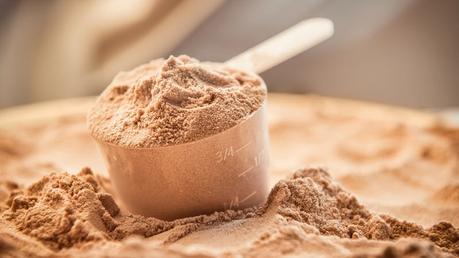
The question is not whether your keto diet is dirty or clean, lazy or complicated. The question is: Does your version of keto or low carb work for you?
Most people don't need to calculate macronutrient intake or eat as much fat as possible to lose weight successfully.
Studies based on the original dirty, lazy keto diet - the Atkins diet (more about that below) - show that most people don't need to calculate macronutrient intake or eat as much fat as possible to lose weight successfully.Reducing carbohydrate intake by eating as much as you like from a long list of protein-rich foods, as Atkins instructs, also ensures that you'll get plenty of protein and protect your muscle mass.
As for "eating clean," avoiding foods in crinkly packages can often lead people to better dietary choices. But not everyone thinks of processed and packaged foods in the same way - or needs to avoid them to lose weight.
Your keto or low-carb diet works for you if:
- You can achieve or maintain good health, with improved blood sugar, blood pressure, and cholesterol levels.
- You can reach or maintain a weight that is healthy for you.
- You're getting adequate protein, vitamins, and minerals.
- You maintain muscle or bone mass as appropriate for your size and weight loss.
- You aren't struggling with hunger, cravings, low energy, digestive issues, headaches, or brain fog.
- You enjoy your diet enough to stick to it long term.
To lose weight, you don't need a diet - keto, low carb, or anything else - that requires you to spend your days counting, analyzing, and agonizing about what to put in your mouth, although some people might prefer that approach.
If a keto or low-carb diet doesn't have to be complicated to help you lose weight and feel great, where did the idea of dirty, lazy keto come from? It may surprise you, but a doctor with a famous diet book may have done more to promote dirty, lazy keto than anyone else.
7. Atkins: the original dirty, lazy keto
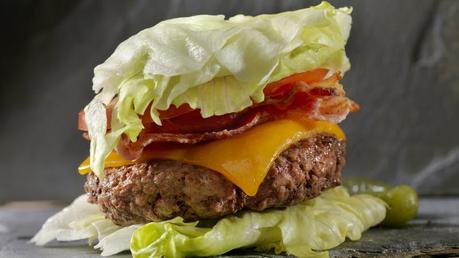
In the early 1970s, before "keto" was even a word, low-carb diets for weight loss became enormously popular. In 1972, Dr. Robert Atkins published a low-carb diet book that, in its various editions, has become one of the best selling books ever.
Dr. Atkins told readers to eat as much as they wanted from the allowed foods list of meat, poultry, fish, eggs, and salads made with leafy greens.
Dr. Atkins told readers to eat as much as they wanted from the allowed foods list of meat, poultry, fish, eggs, and salads made with leafy greens.The Atkins diet also had a "no-no" list of foods to avoid. The list included sweets and desserts, limited on most weight-loss diets. It also included high-carb foods that many people consider "healthy," such as fruit, milk, potatoes, and pasta.
The Atkins diet might be the original lazy keto diet because it doesn't focus on hitting "macro" targets but just asks readers to track carbs.
The book also doesn't give instructions for eating as much fat as you can. Some fat sources, such as cheese and heavy cream, are limited on Atkins, although others - butter, mayonnaise, and the fat that comes with protein - are not.
In the 1970s, the Atkins diet was based mostly on whole foods simply because low-carb snacks, shakes, and bars were not widely available.
But Dr. Atkins did tell readers how to cut carbs by throwing out the bun on a fast-food bacon cheeseburger or eating only the toppings from a pizza. Today, these tricks would also earn the Atkins diet a "dirty keto" label.
There's plenty of evidence to show that an Atkins-style, dirty, lazy keto diet works for weight loss. In several studies, researchers use Atkins as the model for teaching participants how to eat a very low-carb diet. And participants lost weight successfully.
Low-carb diets for weight loss had a comeback in the early 2000s, as the public worried about increasing rates of obesity. This time, food manufacturers, including Atkins Nutritionals, were ready with low-carbohydrate versions of favorite high-carb foods.
Dieters could now have muffins, pasta, and candy and, theoretically, stick to low carb. These products might have made dieting easier for some, but others found that low-carb convenience foods made it harder to lose weight.
8. Paleo diets put the focus on "clean eating"
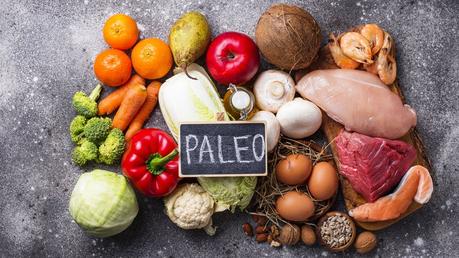
Around 2010, "clean eating" patterns and paleo diets came along, offering a distinct contrast to low-carb diets and ketogenic diets for epilepsy. Instead of providing more convenience through processed, packaged foods, "clean eating" focused on whole foods, or, in the case of paleo, foods our cavemen ancestors would have eaten.
These diets are not necessarily low in carbohydrates, but many people found that eliminating processed food helped them lose weight and improve their health.
9. Diets for epilepsy put the focus on macros
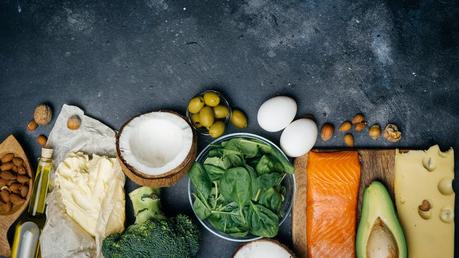
In 2009, a group of researchers and physicians who specialize in ketogenic diets to help hard-to-treat cases of childhood epilepsy published an influential paper.
Their paper describes a "classic" ketogenic diet, which uses a ratio of 4 grams of fat to every gram of protein and carbohydrate. This ratio helps produce enough ketones to have a therapeutic effect on brain function. With a classic ketogenic diet, 90% of calories come from fat, with 10% from protein and carbohydrate combined.
Strict ketogenic diets can be composed of whole, unprocessed foods. However, with medical supervision, they are often administered through products specifically formulated to provide the right fat, protein, and carbohydrate ratios.
10. Keep it simple for success
As obesity rates continued to rise, the search for the "perfect" weight loss diet continued. It's no surprise that somebody combined the principles of "clean eating" or paleo diets with the strict macronutrient ratios of ketogenic diets for epilepsy.
The result? "Clean keto" diets based on macronutrient ratios. This approach introduced many of us to low carb or - as we now call it - keto.
In terms of health improvements, the results of "clean keto" diets that use macro percentages are likely to be similar to a dirty, lazy keto diet that follows the Atkins model. Both diets can lower insulin, allow ketone production, and facilitate weight loss.
Although some people prefer to track calories, macronutrient ratios, or ketone levels, doing so isn't required to achieve success with an Atkins-style keto diet. And for some, not having to count also makes it easier to follow. This "keep it simple" approach is very similar to the advice we offer at Diet Doctor.
With a simple, easy-to-do version of low carb or keto, you can have a life, not just a diet. And, at Diet Doctor, we can help.

